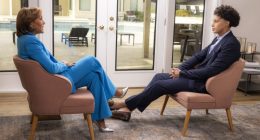
A richer color scheme encourages customers to tip a lot more.
February 1, 2019 4 min read
Opinions expressed by Entrepreneur contributors are their own.
My daughter waitressed full time at a restaurant for a year between college and grad school. Here’s the biggest fact she taught me: for the wait staff at a restaurant, it is all about the tips.
Not surprising, right? Your server may pretend not to be looking when you tip but that nonchalance is just a ruse. Believe me, they’re looking. Yes, it’s all about the tips because in many areas of the country tips are not just added income, tips are most of the income for an employee. In Philadelphia, where I live, restaurant owners can legally pay their wait staff as little as $2.83 an hour, which is almost $5.00 less than the state minimum wage, because the difference is made up by tips.
Related: 12 Great Resources for Diving Into Consumer Psychology
Here’s another thing I learned: tips equals turnover. Where my daughter worked was always busy and people were tipping, so she busted her you-know-what to keep that job. In this low unemployment economy, restaurants and other small businesses are all desperately trying to keep good people. But good people want money and the more money they get the more enticed they are to take (and stay) with a job. Simple as that.
Unfortunately, coming up with that money for a small business isn’t so simple. So wouldn’t it be great if the employees working at your restaurant could make more money than they could working for your competitor down the street, without the difference coming out of your pocket? Well, I’ve got a golden opportunity for you!
A research team from the University of Tennessee – Knoxville asked a bunch of restaurants to give diners their bills in either a gold folder or a black folder. The diners who received their bills in the gold folder tipped an average of 21.5 percent, while the others tipped 18.9 percent. That’s almost a 14 percent difference in an employee’s compensation (the same test was also performed using gold and orange folders with little difference). But that’s not all. The researchers also found that diners seated at tables with gold tablecloths left larger tips than those seated at tables with white tablecloths.
“It seems that mere exposure to the color (gold) makes customers feel like they’re in a restaurant that caters to high-status people,” Na Young Lee, one of the researchers, wrote in The Conversation. “And when people feel like they’re wealthier, they tend to be more inclined to flaunt their wealth.”
Related: 5 Strategies of ‘Psychological Pricing’
The impact of color on your customers’ behavior should never be underestimated. There are countless studies that prove that the color of a room, a product or even clothing will have an effect on people’s moods and buying behavior.
In this case, restaurant owners who do something as simple as offering a restaurant check in a gold billfold or using gold tablecloths can result in a significant raise for their employees. But the really important thing is that these same restaurant owners don’t have to spend very much in the process. Although the study didn’t extend to retailers and other businesses who sell to consumers, I’d bet that including a little more gold in their décor would also have a positive impact on buying behavior.
So go for the gold, friend. Your employees will appreciate it and so will your accountant. Unfortunately, I learned this lesson a little too late to recommend this tactic to my daughter’s employer. Looks like I got stuck with the bill again.
This article is from Entrepreneur.com









